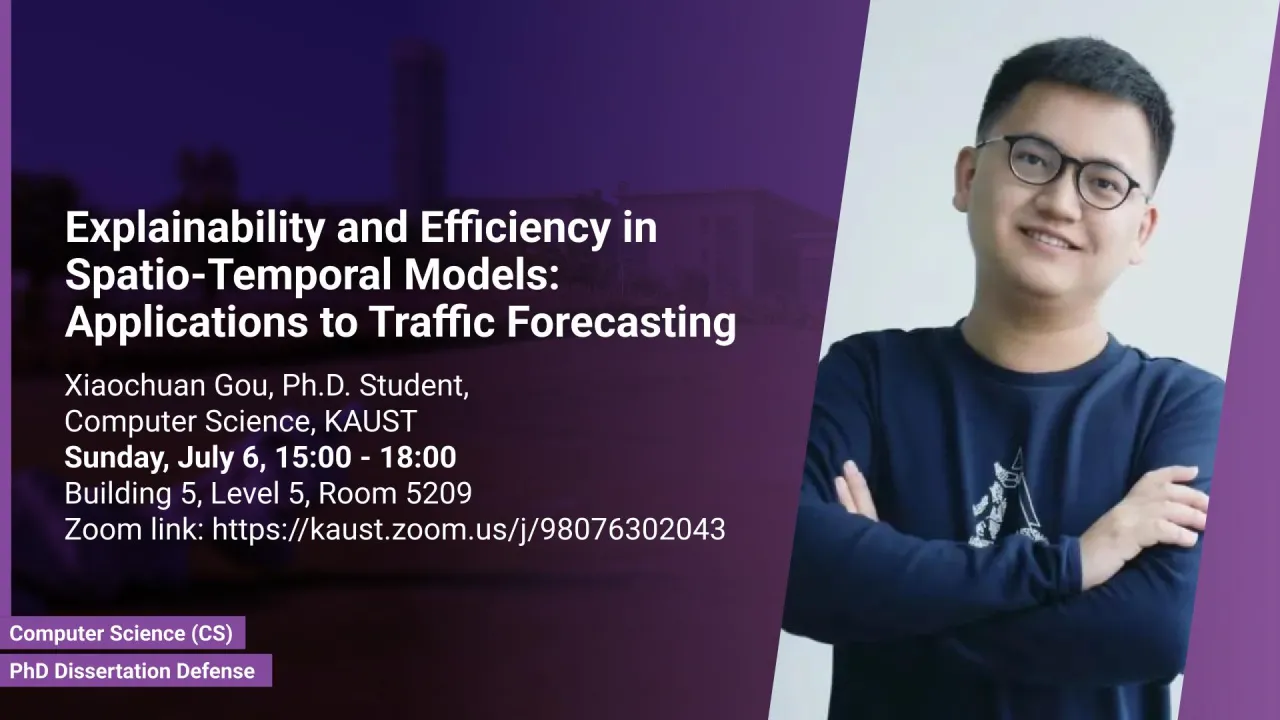
Explainability and Efficiency in Spatio-Temporal Models: Applications to Traffic Forecasting
This dissertation addresses key challenges in deep learning-based traffic forecasting, including computational efficiency, model interpretability, and data limitations, despite recent progress in spatio-temporal modeling techniques.
Overview
Traffic forecasting is a critical component of Intelligent Transportation Systems (ITS), supporting applications such as adaptive traffic signal control, dynamic route planning, and congestion mitigation. Recent advancements in deep learning have led to the development of spatio-temporal models that effectively capture spatial and temporal dependencies in traffic data, thereby enhancing prediction accuracy. Despite these advancements, several challenges persist. Firstly, the increasing complexity of model architectures often results in substantial computational requirements, hindering real-time deployment due to prolonged training and inference times. Secondly, many existing models lack interpretability, making it difficult to understand the underlying factors influencing traffic dynamics. Thirdly, publicly available traffic datasets frequently lack diverse features, such as incident reports and road metadata, limiting the development of models that can account for various factors affecting traffic flow.
To address these challenges, this thesis proposes several approaches and a foundation dataset for traffic analysis that advances both the efficiency and explainability of traffic forecasting. For model efficiency, we develop QuoGNN, a lightweight graph neural network that introduces a context-enhanced similarity graph and quotient-based reasoning to capture spatial-temporal dependencies with reduced computational overhead. To improve interpretability, we present two complementary approaches. The first leverages a multi-task learning framework with a Graph Gate LSTM to model distributed telecommunication traffic, revealing implicit spatial relations across base stations. The second incorporates expert knowledge and large language models to construct concept-based explanations, enabling scenario-specific interpretation of model predictions. Furthermore, we introduce TraffiDent, a large-scale multimodal traffic dataset that includes three years of time series data, over 1.4 million incident records, and rich road-level metadata. TraffiDent supports a wide range of novel tasks, such as post-incident forecasting, causal analysis, and incident classification.
Presenters
Brief Biography
Xiaochuan Gou is a Ph.D. candidate in the Computer Science program at King Abdullah University of Science and Technology (KAUST), under the supervision of Prof. Di Wang and Prof. Xiangliang Zhang. His research focuses on spatio-temporal data mining, with an emphasis on explainability and efficiency in deep learning models for traffic forecasting and urban computing. He is the lead author of TraffiDent, an open-source multimodal traffic dataset that integrates incident information and supports explainable modeling, and has published multiple papers in top-tier international conferences such as CIKM, WSDM, Big Data, and SIGSPATIAL.

